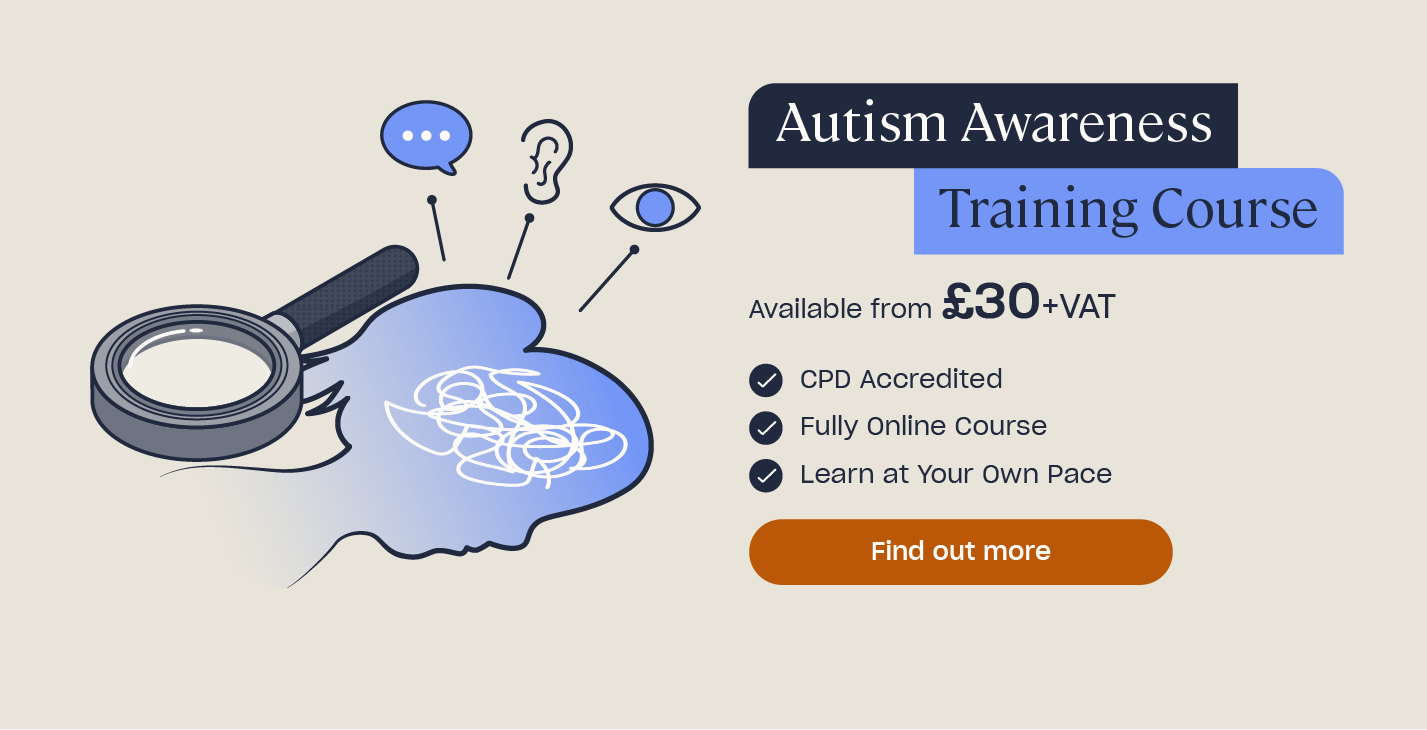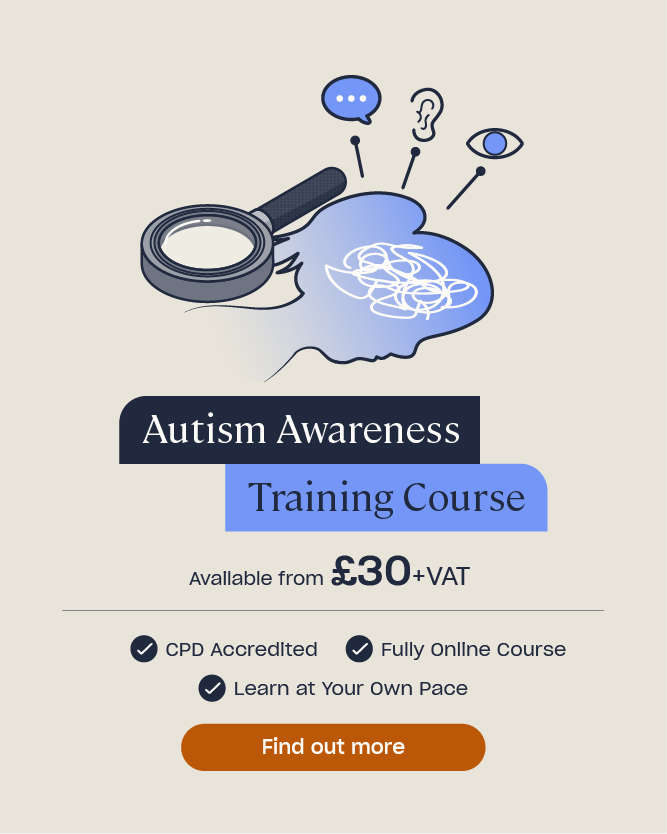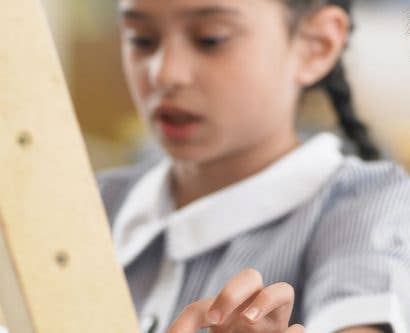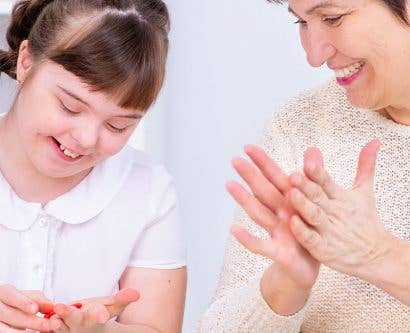What is Autistic Masking?
Autism is a lifelong neurological difference, which means that autistic individuals interact and experience the world in a different way to non-autistic people. The concept of neurodiversity teaches us that there is natural diversity in the way the human brain works. Autism is an example of neurodivergence, and as such should be viewed as a natural difference to be supported, rather than a deficit or disorder to be treated.

Autism is a spectrum – every autistic individual will have their own unique strengths and challenges. Although the autistic experience is different for each individual, there are shared areas of difference. The main areas of difference relate to:
- Communication and language differences.
- Social interaction differences.
- Rigid and repetitive behaviours, activities, and interests.
- Sensory differences.
Autistic masking refers to the suppression of elements of a person’s autistic experience or identity. In this article, we will look at what is meant by autistic masking, and provide some examples of how masking might manifest. As someone supporting autistic children in an educational setting (or at home), it is essential that you have an understanding of why some children may mask their needs. At the end of the article, we will discuss some strategies to help support them.
What Does Autistic Masking Mean?
Research is in its infancy with regards to autistic masking, but it is thought that 94% of autistic adults have masked at some point in their lives (Sedgewick et al, 2022).
Autistic masking refers to the conscious or unconscious suppression or hiding of elements of a person’s autistic identity. This is often referred to as a social survival strategy – used to conform to expected ‘norms’, cope with situations or environments, or avoid expressing anxiety.

Autistic author, Helen Ellis, uses the example of Superman’s alter ego, Clark Kent, to illustrate masking. Superman knows that he is different and that in order to ‘fit in’ with society, he has to suppress his differences and invent an unassuming role – someone that nobody will notice.
Autistic masking can be considered a response to stigma and trauma (Pearson and Rose, 2021). The fact that autistic people may need a social survival strategy suggests that society is currently not meeting their needs.
We learn that in order to not be excluded, marginalised, invalidated, and ill-treated, that we have to be ‘acceptable’ and project a personality that gives others comfort, so that we aren’t treated that way.
Kieran Rose, Autistic Advocate
Whilst awareness of autism is growing, understanding and acceptance needs to improve. Research by the National Autistic Society found that 79% of autistic people felt socially isolated because of a lack of public understanding of autism.
Masking takes an exhausting amount of effort. Whilst occasional masking can help autistic people in the moment, sustained masking can have a detrimental effect on mental health and wellbeing, as recognised in ICD-11 (the current international diagnostic criteria for a medical diagnosis of autism spectrum disorder). We will look further at the potential effects of masking later in this article.
Want to Learn More?
Our Autism Awareness in Education Training teaches those working in education settings how to effectively support autistic children and young people in their care. You could also take a look at our SEND in the Classroom course which is designed to help you understand how to provide individualised, effective support to children and young people with special educational needs.
Autistic Masking Examples
Masking can take many different forms. These can be conscious or unconscious strategies that an individual uses in different situations. It must be remembered that autistic masking is not the same as a non-autistic person employing short-term social strategies in situations that are challenging – for example, acting more confidently than they feel for an important presentation.

Autistic masking can involve a person denying large parts of their identity – for example not allowing intense anxiety surrounding certain sensory experiences to show – sometimes on a long-term basis.
Examples of masking can include, but are not limited to:
- Mimicking the social behaviour of others, including gestures or facial expressions.
- Deliberately forcing or faking eye contact during conversations.
- Hiding or underplaying their own intense interests.
- Scripting or rehearsing conversations, or preparing a bank of ‘stock phrases’ for conversations.
- Suppressing stimming (self-stimulating) behaviours.These are repetitive behaviours, such as whistling, jumping, finger-clicking, etc., which are used by autistic people to help self-regulate and for fun.
- Internalising sensory discomfort.
Masking is not specific to any gender, but it is suggested that one of the reasons that less females are currently diagnosed may be due to particularly high levels of masking in those who have a more internal presentation of autism – of which those raised as girls make up a high proportion. (More information can be found in the Autistic Girls’ Network report, Keeping it all inside.
Why Might Children and Young People Mask?
Currently most research regarding masking has focussed on autistic adults, although a need has been highlighted for more research into how masking starts in children.
Often an autistic person’s biggest struggle is not rooted in being autistic, but in the non-autistic world they inhabit. In addition, schools may be places where autistic children feel the need to ‘mask’ for social survival: feeling the need to conceal their personality, their interests, and even their vulnerabilities in order to avoid the judgement that comes with being different.
Chris Bonello, autistic advocate, writer, and speaker, and ex-primary school teacher
Thinking back to the key areas of difference mentioned earlier, it is easy to see why education settings can present challenges for autistic children and young people. For example, there are a multitude of social conventions and expectations, a wealth of different sensory environments, and many situations grounded in non-autistic expectations of communication.
Children may internalise the anxiety this can generate and mask in order to get through the school day. Unfortunately, this means that their true needs may not be recognised, and that they do not receive support that could help to meet those needs. This can happen even after diagnosis, especially if children are meeting expected academic standards, as professionals do not necessarily observe difficulties.
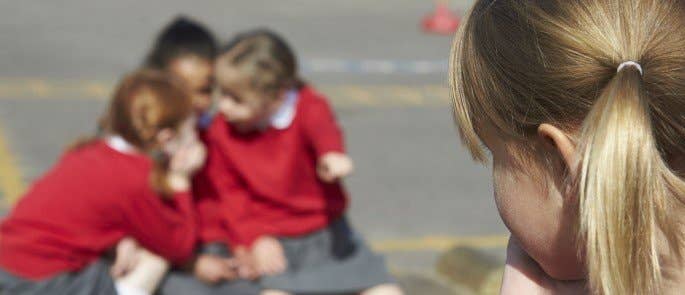
Children may also mask due to fears for their safety or worries that they will be victimised for being ‘different’ if they do not try to conform. Shockingly, 75% of autistic young people have experienced bullying and only half of young people said that they felt safe at school (Ambitious About Autism).
How to Support Children Who Mask Their Needs
It is essential that we are able to support autistic learners effectively, and put in place adjustments to the learning environment that can allow them to be their true selves, without needing to mask.
Effects of Masking
The detrimental long-term effects of having to mask include:
- Autistic fatigue or autistic burnout (severe exhaustion accompanied by other difficulties, including increased meltdowns or shutdowns).
- Rejection of their own identity, impacting self-esteem.
- Mental ill-health, including anxiety and depression.
- Increased risk of suicidal thoughts (Kassidy et al, 2021).
- Needs not being recognised or met.
- Delayed diagnosis or lack of diagnosis.

Support Strategies
The following key strategies can help you to support autistic children who may be masking.
1. Develop Your Own Understanding of Autism
In 2021, the government published the latest autism strategy, which, for the first time, now includes children and young people. This strategy recognises that autistic children are currently not receiving the positive educational experiences that they are entitled to, and states that by 2026 the government wants:
- Education settings to provide better and more inclusive support, [..] so that autistic people are better able to achieve their potential.
- More teachers and educational staff to understand the specific needs of their autistic pupils, ensuring that more school placements can be sustained.
- More autistic children to have their needs identified early on and to have positive experiences in education settings.

As education professionals, developing your own understanding of autism and what it means to be autistic (including awareness of the fact that children may mask their needs), will help you to work towards these aims. Our recently updated Autism Awareness in Education training can help you build your own knowledge and confidence in providing effective, individualised support for autistic learners, in addition to offering practical supportive strategies that can inform your practice.
2. Promote an Inclusive Whole-School Culture
For children to be less likely to mask, they need to feel that their autistic identities are respected and supported. Rather than expecting autistic people to change to ‘fit in’ to the environment, the environment needs to be changed to support neurodiversity.
Schools and other settings should aim to do this at a whole-school level, increasing understanding of autism within the school community (staff, pupils, and parents – including parents of non-autistic children). The whole school community should embrace the concept of neurodiversity, where they see autism as a difference, not a deficit.

Bullying of autistic children and young people is something that schools need to tackle. By law, a school’s behaviour policy must set out measures to tackle any bullying that occurs, and staff should be trained to be vigilant to the signs of bullying. Work should also be done to encourage peers to be ‘upstanders’ rather than bystanders to bullying – to stand up and advocate for their peers.
It is absolutely vital that all schools and workplaces work to become fully inclusive communities that seek to protect all neurodivergent individuals from the actions of bullying.
Fintan J O’Regan, neurodiversity and education expert
3. Provide Individualised Support
Your support of children and young people with SEND should always be driven by their actual strengths and needs, and in line with the Graduated Approach. By making adjustments to effectively support individuals’ differences, the impetus to mask should lessen.
Care should be taken to support autistic learners’ social, emotional, and mental health. Figures show that 70% of autistic children have a mental health problem. Masking can both contribute to mental ill-health and camouflage the signs of mental-ill health. Therefore, it is doubly important to both understand masking and to support children’s mental health to hopefully minimise the need to mask. Our articles How to Support SEMH in Schools and How to Help a Child with Anxiety in the Classroom offer some practical strategies that could be useful in your setting.
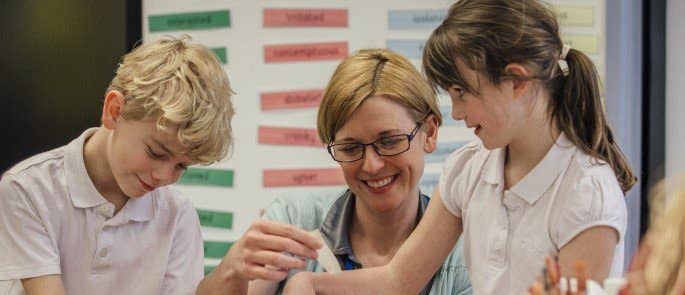
Building effective relationships with, and getting to know, the autistic learners that you support will be key in providing them with support that meets their individual needs. For example, knowing what makes them anxious, even if they mask their anxiety response, will allow you to remove that barrier, and therefore reduce the need to mask.
4. Listen to Parents and Carers
Parents are the experts on their own children. However, parents of autistic children who mask often report feeling unheard, shut down, or even judged as a bad parent when they report a picture of their child that is different to the one seen in school.
Many autistic children will present differently at home. This is often due to feeling safe, that they can fully be their true self at home, as well as experiencing less pressure to mask. (For example, they may stim more than at school because they don’t fear judgement).

Often parents report what is sometimes called, ‘the Coke bottle effect’ – the pressure of coping with anxiety during the school day builds, and is only released when they get home.
This can be one reason why sometimes school staff report seeing no signs of difficulty but at home parents report distressed behaviour.
In order to properly support learners, teachers need to get a picture of their strengths and challenges at home. Conversations with parents can provide you with valuable insight, and help to establish successful home-school collaboration.
It is imperative that parents and carers are listened to. If they report concerns, do not dismiss them simply because you have not observed them. In fact, the difference between the two presentations should be a sign to alert you to the possibility that the child or young person is masking.
In conclusion, if you are working with autistic children and young people, it is likely that you are working with individuals that will, at points, be using autistic masking. By understanding autism and autistic masking, you can better respond to their needs and potentially remove some of the reasons that may lead to them masking in the first place.
Further Resources:
- Autism Awareness in Education Training Course
- How to Support a Child with Autism in the Classroom
- How to Support a Child with Pathological Demand Avoidance (PDA)
- Autism Awareness Quiz
- Parenting Changes to Make for Teens with Autism
- Autism Feelings Chart for Children


